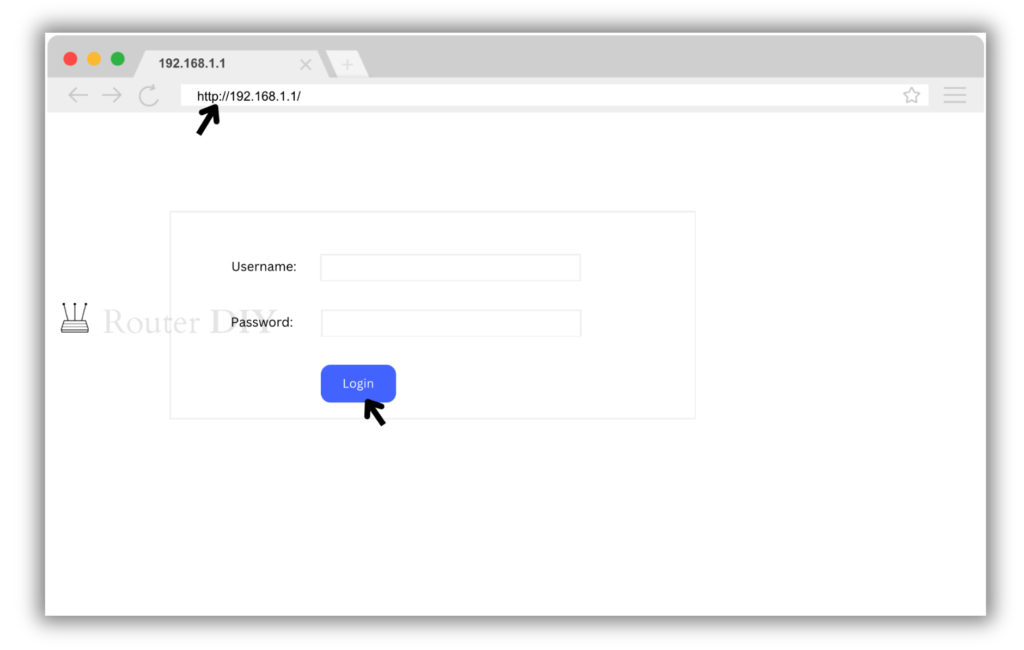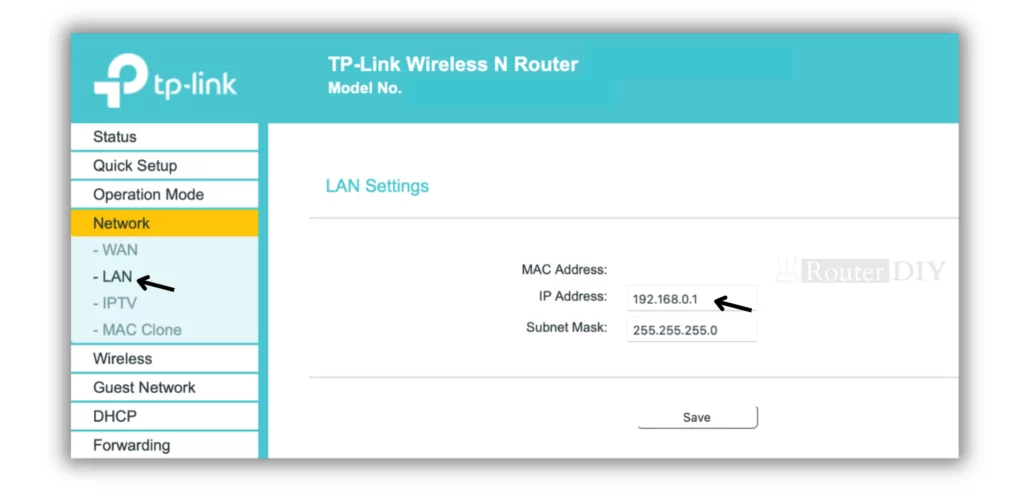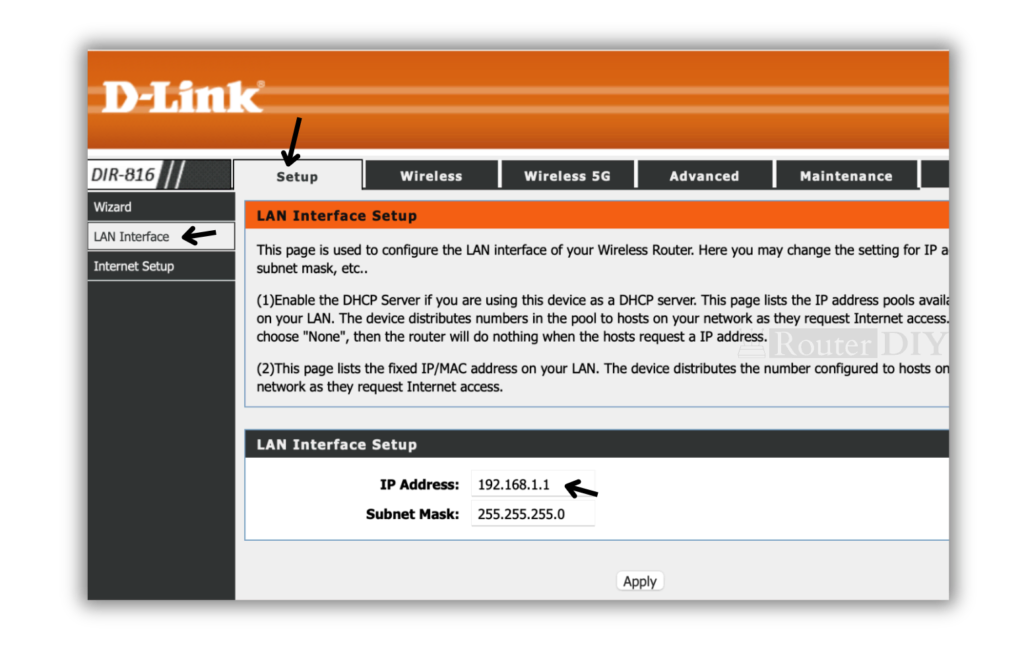The term 192.168.1.1 is more than just a seemingly random assortment of numbers. Router companies often use a private IP address as the default gateway in networks and routers. This Class C IP address is the heart of your router’s administrative panel, pivotal in setting up, customizing, and protecting your network. This address is part of the 192.168.0.0 to 192.168.255.255 range, designated for private networks, providing a total of 65,536 addresses within this range. IANA (Internet Assigned Numbers Authority) allocates blocks of IP addresses to Regional Internet Registries (RIRs), which in turn distribute them to organizations and end users.
192.168.1.1 is the Default Gateway IP Address of Wireless Routers.
Here are the steps
The Role of 192.168.1.1 in Your Network
The 192.168.1.1 Router Login IP address is your network’s internal or private address used by your router to interact with the internet. When you connect a device to the internet, your router uses this IP address to send and receive data packets. 192-168-1-1 serves as the gateway between your network and the World Wide Web.
How to Login to 192.168.1.1?
Logging into 192.168.1.1 to access the admin panel of your router is a clear process:
- Open a web browser.
- Enter http://192.168.1.1 into the browser’s URL bar.
- A login page will appear. Input the username and password.
- You’re now logged into the router’s Admin Panel.

Note: If you cannot access the router’s admin panel at 192.168.1.1, try using a different login IP address, such as 192.168.0.1 or 10.0.0.1.
Dealing with Forgotten Usernames and Passwords
If you need to find your IP address, username, or password, don’t fret. You can recover or reset them in a few simple steps:
- Look at the manual/box or back of the router/modem for the default username and password.
- If you’ve changed the password and lost it, perform a factory reset. This involves pressing a hidden RESET button on the back of your router with a paper clip or needle for about 10-15 seconds.
Changing Your Router Login IP Address
Any router’s default gateway IP address comes pre-assigned by your internet service provider, but you can change it to suit your needs. Changing your IP address (192-168-1-1) adds a layer of security to your home network, preventing unauthorized access to your admin panel and DDoS attacks.
Here’s a quick guide on how to change your IP address for a few common router brands:
TP-Link
- Login to the default admin panel at 192.168.0.1 or 192.168.1.1 (default username and password is admin/admin).
- Navigate to Network > LAN.
- Under the IP Address field under MAC address, change it to your desired address (e.g., 192.168.0.1).
- Save your changes, and the router will reboot to apply them.

D-Link
- Login to your router configuration page (router username: admin & password: admin/blank).
- Go to Setup > LAN Interface.
- Find the Router IP Address field and change it as preferred.
- Apply your settings in the router admin panel.

Login to NETGEAR Router
- Access the NETGEAR router settings page via 192.168.1.1, 192.168.0.1, routerlogin.net, or routerlogin.com (default username is admin, and router password is password).
- Navigate to Advanced > Setup > LAN Setup.
- Under LAN TCP/IP Setup, you will see the IP Address field. Please change it to your preferred address. For this example, set it to 192.168.1.1. From now on, you can log in to the Netgear router using this preferred IP address.
- Apply your changes, and the system will reboot to update settings.
If you need to type the router login IP address like 192.168.l.l or 192-168-1-1 or 192.168.1 1 or without the full stops (192 168 1 1), you can’t set up the router using the default IP address. If nothing works out, just reset the router to use the IP listed in the manual.
Protecting Your WiFi Network
Securing your WiFi network is crucial to prevent unauthorized access. Here are a few basic rules to follow:
- Enable WPA2 encryption.
- Set up a strong password after getting the router admin login.
- Disable WPS as it’s an outdated method of synchronization between Wi-Fi networks.
- Enable MAC-address filtering.
- Regularly update your router firmware right from the router admin login.
Strong passwords for your router and network are vital to protecting your WiFi from intruders. Remember to note down the username and password for your 192.168.1.1 router. If you forget them, you’ll need to reset the device to factory settings and go through the setup process again.
Answers you should know
How do I connect to my router administration console?
To connect to your router’s administration console, you should type the IP address 192.168.1.1 into your web browser’s address bar and press Enter. This should bring you to the login screen of the router’s web portal.
What if I don’t know my router login credentials?
If you don’t know your default router login information, you can find it in the user’s manual or use RouterDIY.com for the manufacturer’s default username and password. The default username is often admin, and the default password can be password or admin for many routers.
How do I change my router’s password?
Once you log in to the router admin panel using the default credentials, you can go to the Administration page and click Change WiFi Password to update your login information.
What should I do if I can’t connect to my router’s admin interface?
If you’re unable to connect to your router’s admin interface, you may need to check your network connection or reboot your router. For some routers, like the D-Link DIR-868, rebooting the router can resolve issues accessing the admin login.
How can I secure my Wi-Fi network after logging in?
To secure your Wi-Fi network, you should update the default login credentials through 192.168.l.l, choose a strong security level, select a secure Wi-Fi channel, and ensure your router’s firmware is up to date. You can usually find these settings in the Wireless or Security sections of your router’s admin panel.
Whether setting up a new router or optimizing an existing one, understanding the role and operation 192.168.1.1 can significantly enhance your networking experience. This private IP address is the key to unlocking complete control over your router’s settings and securing your network against threats.
Remember, if anything goes wrong during the process, you can always reset your router to its original factory settings, wiping all customization from the router admin panel. With patience and care, you can easily manage your router’s settings and enjoy a secure and efficient home or office network.